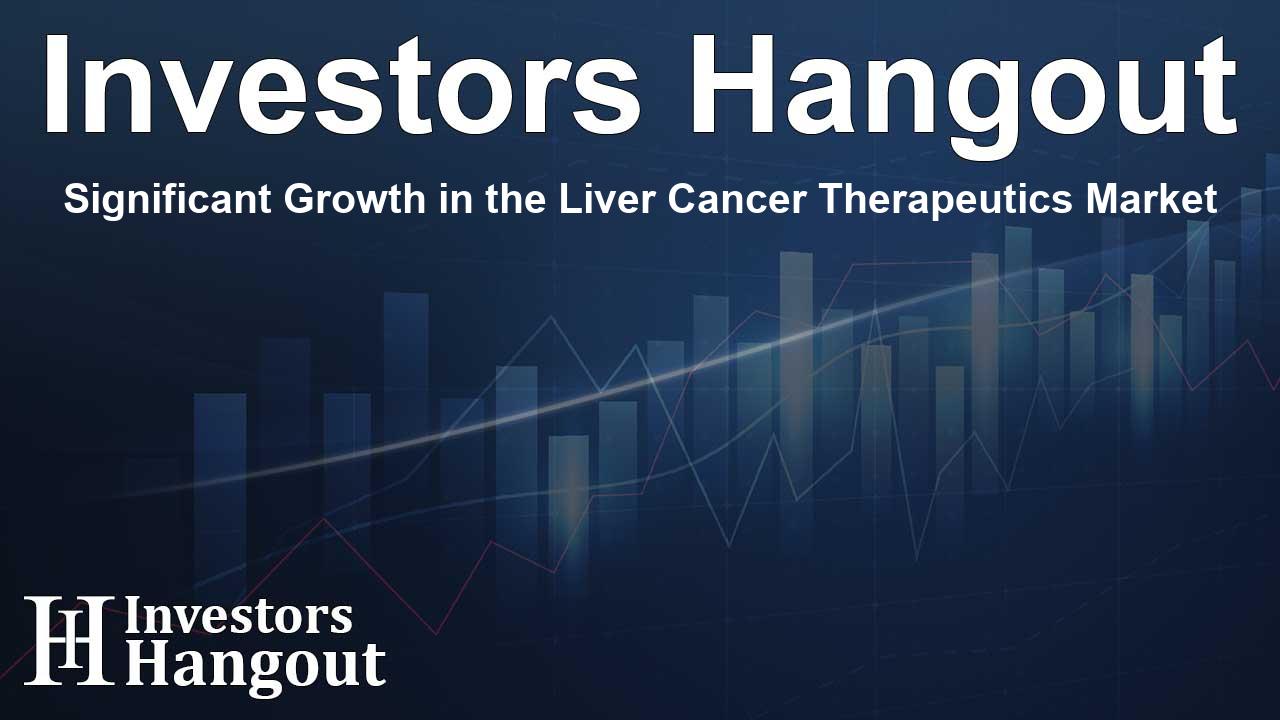Significant Growth in the Liver Cancer Therapeutics Market

Liver Cancer Therapeutics Market Overview
The liver cancer therapeutics market is experiencing remarkable growth, projected to reach USD 15.69 billion by 2032, expanding at a compound annual growth rate (CAGR) of 19.21% from its 2023 valuation of USD 3.12 billion. This surge is driven by the increasing incidence of liver cancer worldwide and the rising demand for advanced treatment options.
Factors Driving Market Growth
The growth of the liver cancer therapeutics market can be attributed to multiple factors, including the escalating frequency of liver diseases such as hepatitis and non-alcoholic fatty liver disease (NAFLD). Alongside these underlying conditions, the introduction of targeted therapies and immunotherapies is becoming integral for effectively managing liver cancer.
The Rise of Targeted and Immunotherapy Approaches
Targeted therapy has established itself as a leader in the market, claiming approximately 56% market share in 2023. This is due largely to the efficacy of treatments that target specific molecular markers associated with cancer, allowing for more precise and potentially less harmful treatment outcomes compared to traditional chemotherapy. Furthermore, ongoing research continues to innovate in this field, promising to increase treatment options and effectiveness.
Major Players in the Market
Several well-known companies are pivotal in shaping the liver cancer therapeutics market. These companies include:
- Bayer AG
- Eisai Co., Ltd.
- Roche Holding AG
- Merck & Co., Inc.
- AstraZeneca
- Bristol-Myers Squibb
- Pfizer Inc.
- Exelixis, Inc.
- Eli Lilly and Company
- Novartis AG
- Sanofi
- Gilead Sciences, Inc.
- BeiGene, Ltd.
- Regeneron Pharmaceuticals, Inc.
- Amgen Inc.
- F. Hoffmann-La Roche Ltd.
- Ipsen
- Hutchmed
- Can-Fite BioPharma
- Zymeworks Inc.
Market Segmentation
The liver cancer therapeutics market can be broken down into various segments to better understand the components driving growth:
By Therapy
- Targeted Therapy
- Immunotherapy
- Chemotherapy
By Drug Type
- Hepatocellular Carcinoma (HCC)
- Cholangio Carcinoma
- Hepatoblastoma
- Others
By Distribution Channel
- Hospital Pharmacy
- Retail Pharmacy
- Online Pharmacy
Regional Insights
North America accounted for a substantial 43% of the global market share in 2023. This significant figure is reflective of the advanced healthcare infrastructure within the region and the prevalence of liver cancer, which has driven demand for innovative therapeutic options. The region’s robust presence of pharmaceutical companies also fuels the development and introduction of novel therapies.
Asia-Pacific Growth Potential
In contrast, the Asia-Pacific region is predicted to grow at the fastest rate over the coming years. Increased cases of liver cancer driven by hepatitis and lifestyle choices in countries like China, India, and Japan underscore the necessity for enhanced therapeutic access and technological advancements in healthcare.
Recent Developments in Liver Cancer Treatments
Recent announcements hint at a vibrant future for liver cancer therapies. Bristol Myers Squibb's FDA acceptance of the supplemental Biologics License Application for Opdivo in combination with Yervoy highlights the ongoing development of effective treatment combinations. Similarly, results from Roche's Phase III trials of Tecentriq and Avastin emphasize the promising advancements in the industry.
Conclusion
The liver cancer therapeutics market is on an upward trajectory, ripe for investment and development, as healthcare providers and researchers work diligently to address the challenges posed by rising liver cancer cases and the subsequent need for effective treatments. With major players actively engaged in the exploration of innovative therapies, the outlook for patients and the market as a whole is increasingly optimistic.
Frequently Asked Questions
What is the projected market size for liver cancer therapeutics?
The liver cancer therapeutics market is projected to reach USD 15.69 billion by 2032.
What factors are contributing to the market growth?
The rising incidence of liver cancer and advancements in targeted therapies and immunotherapy are significant growth factors.
Who are the major players in the liver cancer therapeutics market?
Major players include Bayer AG, Merck & Co., Inc., Bristol-Myers Squibb, and Pfizer Inc., among others.
What types of therapies dominate the market?
Targeted therapy currently dominates the market, holding 56% of the total market share.
Which region holds the largest market share?
North America held the largest market share at 43% in 2023, driven by strong healthcare infrastructure and high prevalence rates of liver cancer.
About The Author
Contact Riley Hayes privately here. Or send an email with ATTN: Riley Hayes as the subject to contact@investorshangout.com.
About Investors Hangout
Investors Hangout is a leading online stock forum for financial discussion and learning, offering a wide range of free tools and resources. It draws in traders of all levels, who exchange market knowledge, investigate trading tactics, and keep an eye on industry developments in real time. Featuring financial articles, stock message boards, quotes, charts, company profiles, and live news updates. Through cooperative learning and a wealth of informational resources, it helps users from novices creating their first portfolios to experts honing their techniques. Join Investors Hangout today: https://investorshangout.com/
The content of this article is based on factual, publicly available information and does not represent legal, financial, or investment advice. Investors Hangout does not offer financial advice, and the author is not a licensed financial advisor. Consult a qualified advisor before making any financial or investment decisions based on this article. This article should not be considered advice to purchase, sell, or hold any securities or other investments. If any of the material provided here is inaccurate, please contact us for corrections.
